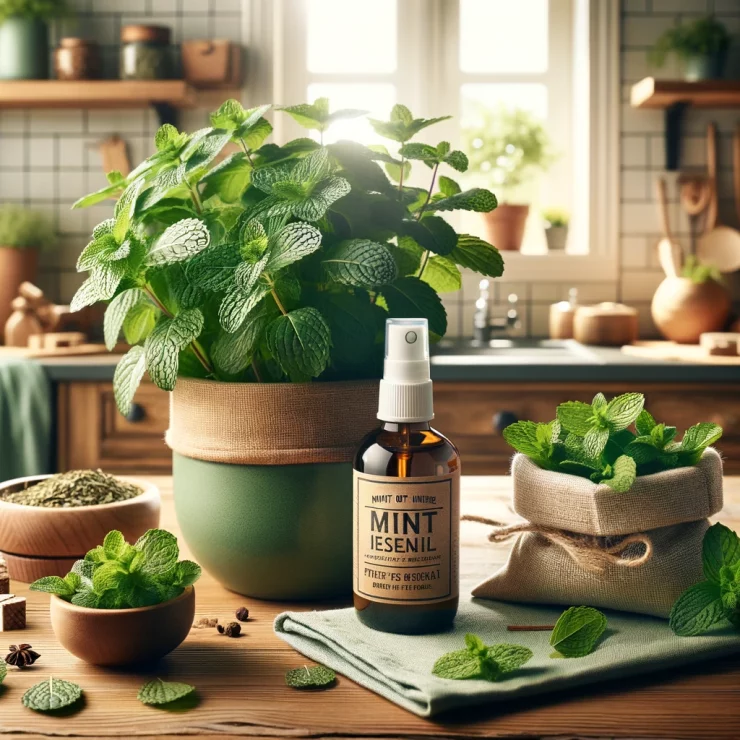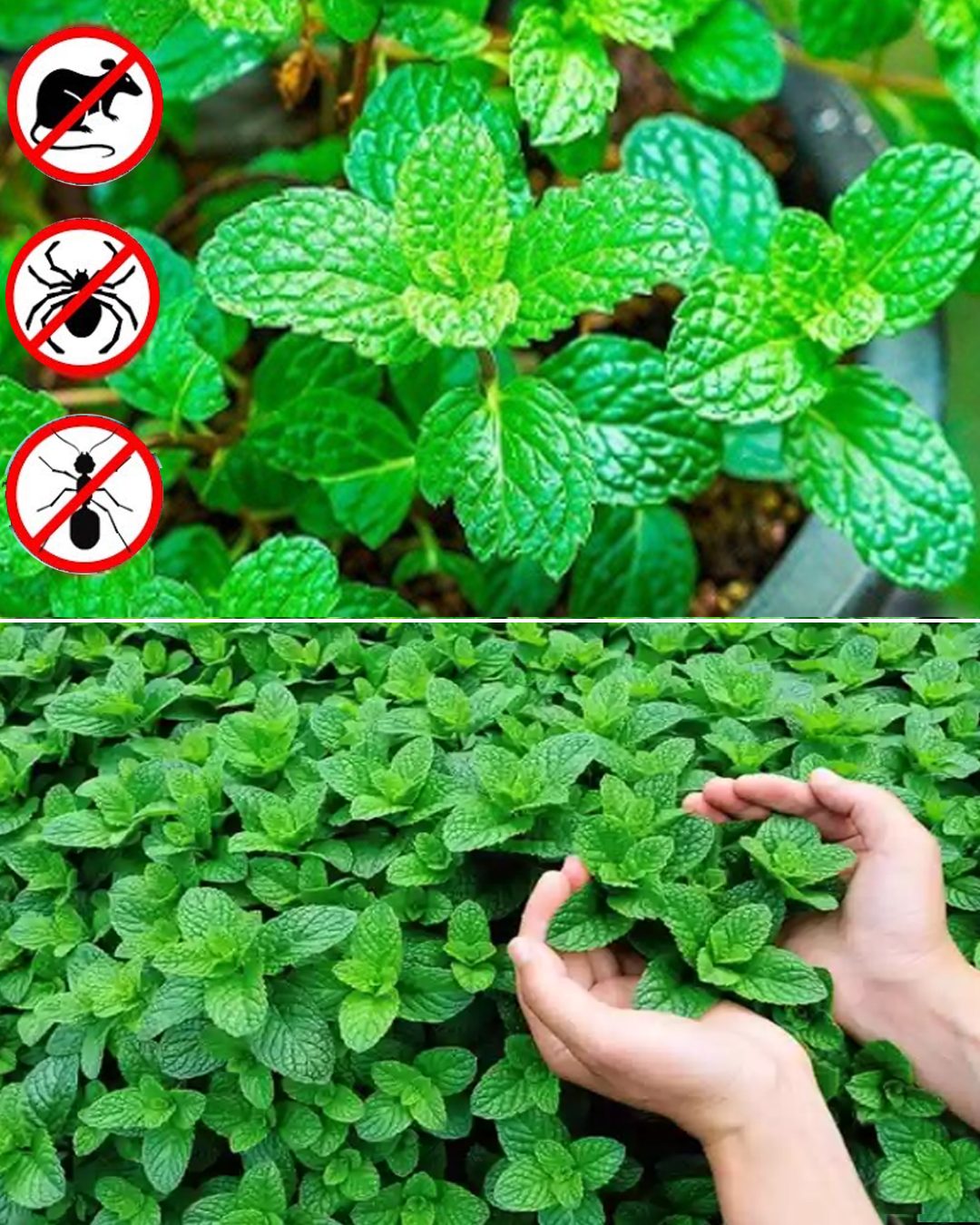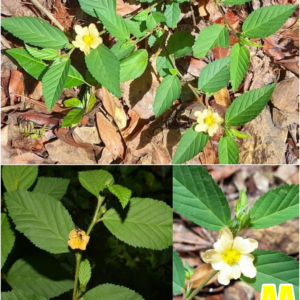Mint, known for its refreshing aroma and culinary versatility, is much more than just a fragrant herb. It’s also a powerful natural repellent for common household pests like mice, spiders, and ants. Incorporating mint into your home can help you maintain a pest-free environment without relying on harsh chemicals. Here’s how mint works as a natural deterrent and how you can use it effectively to keep these unwelcome guests at bay.

Why Mint is Effective Against Pests
- Strong Aroma: Mint’s potent scent is delightful to humans but overwhelming and repellent to many pests. The menthol in mint disrupts the sensory receptors of insects and rodents, making your home less attractive to them.
Natural Compounds: Mint contains natural compounds such as menthol, pulegone, and limonene, which have been proven to deter various pests. These compounds create an environment that pests find inhospitable.
Versatility: Mint can be used in several forms—fresh leaves, dried leaves, essential oil, or even planted in pots—to effectively repel pests from different areas of your home.
How to Use Mint to Repel Pests
- Mint Essential Oil:
Mint essential oil is one of the most potent forms of mint for pest control. Here’s how to use it:
Spray Solution: Mix 10-15 drops of mint essential oil with water in a spray bottle. Shake well and spray it around entry points like windows, doors, and baseboards. Reapply every few days or after cleaning.
Cotton Balls: Soak cotton balls in mint essential oil and place them in areas where you’ve noticed pest activity, such as kitchen cabinets, closets, and under sinks.
- Fresh Mint Plants:
Growing mint plants in your home is a natural and decorative way to keep pests away.
Strategic Placement: Place potted mint plants near entryways, windowsills, and in your kitchen. The fresh, strong scent will help deter mice, spiders, and ants.
Companion Planting: Plant mint in your garden to protect other plants from pests. Mint can help repel aphids, cabbage moths, and other garden pests.
- Dried Mint Leaves:
Dried mint leaves are a convenient and effective way to utilize mint’s pest-repelling properties.
Mint Sachets: Fill small cloth bags with dried mint leaves and place them in drawers, closets, and pantry shelves. Replace the leaves every few months to maintain their effectiveness.
Sprinkling: Sprinkle crushed dried mint leaves around your home’s foundation, garden beds, and areas where pests are commonly found.
- Mint Infusion:
Create a mint infusion to use as a natural spray.
Preparation: Boil a handful of fresh mint leaves in water, let it cool, and strain the leaves out. Pour the infusion into a spray bottle and use it to mist areas where pests are a problem.
Surface Cleaning: Use the mint infusion to wipe down countertops, cabinets, and floors. This not only deters pests but also leaves a pleasant scent.

Additional Benefits of Mint
- Health and Wellness: Mint is known for its various health benefits, including aiding digestion, relieving headaches, and providing a refreshing scent that can improve mood and concentration.
Culinary Uses: Fresh mint leaves can be used to enhance the flavor of teas, salads, desserts, and various dishes, making it a versatile addition to your kitchen.
Aromatic Environment: Beyond its pest-repelling properties, mint adds a delightful fragrance to your home, creating a fresh and inviting atmosphere.
Incorporating mint into your home is a simple and natural solution to keep pests like mice, spiders, and ants at bay. Whether you use mint essential oil, fresh plants, dried leaves, or a mint infusion, you can enjoy a pest-free environment while benefiting from the many other advantages this versatile herb offers. Embrace the power of mint and transform your home into a sanctuary free from unwanted intruders.
News
Discover the Surprising Benefits of Putting a Bay Leaf in Your Socks
When it comes to natural remedies, bay leaves are often overlooked despite their incredible medicinal properties. Traditionally used to enhance the flavor of meals, bay leaves have been revered since ancient times for their therapeutic benefits. What many people don’t…
NBA’s Top Plays of Week 12
The twelfth week of the NBA season delivered a fresh batch of unforgettable moments, showcasing the incredible talent and athleticism that defines the league. From gravity-defying dunks to clutch game-winners and dazzling displays of ball-handling wizardry, the hardwood was ablaze…
NBA Players With UNREAL Athleticism 👀
The world of professional basketball is a realm of extraordinary physical specimens, athletes who push the boundaries of human potential. But within this elite group, a select few possess a level of athleticism that transcends the norm, leaving spectators in…
10 Incredible Benefits of Scentless Mayweed (Tripleurospermum inodorum)
Often overlooked as a common weed, Scentless Mayweed (Tripleurospermum inodorum) is a versatile plant with surprising health and wellness benefits. Native to Europe and now spread across many parts of the world, this plant has been traditionally used for its medicinal properties….
Sida acuta: Surprising Health Benefits and Homemade Uses
Sida acuta, commonly known as common wireweed, is more than just an invasive plant. Traditionally used in various cultures for its potential health benefits, this hardy shrub has found a place in the realm of natural remedies. Despite its reputation…
Ja Morant hits crazy half court shot then has words with Jalen Green 👀
The energy in the arena reached a fever pitch when Memphis Grizzlies star Ja Morant hit an incredible half-court shot, capping off a thrilling sequence that not only electrified the crowd but also set the stage for a heated exchange…
End of content
No more pages to load











